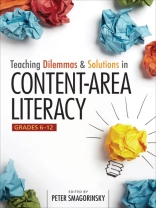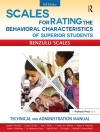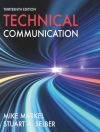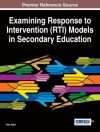Because literacy is not just the English teacher’s job
Think literacy is just for English teachers? Not anymore. Nor should it be when you consider that each discipline has its own unique values and means of expression. These days, it’s up to all teachers to communicate what it means to be literate in their disciplines. Here, finally, is a book ambitious enough to tackle the topic across all major subject areas.
Engage in this cross-disciplinary conversation with seasoned teachers and university researchers, and learn how to develop curriculum and instruction that are responsive to students’ needs across English/language arts, science, social studies, mathematics, visual space, and music and drama. Peter Smagorinsky and his colleagues provide an insider’s lens on both the states of their fields and their specific literacy demands, including:
- Reviews of current issues and state-of-the-art research informing literacy education
- Scenario-based activities for reflection and discussion, typifying the dilemmas and challenges faced by practicing teachers.
- Considerations of the textual forms and conventions required in each discipline
- Specific policy recommendations
Read this book on your own for immediate suggestions on how to improve literacy instruction within your course of study. Better yet, share it with colleagues and participate in a larger conversation about how your literacy expectations influence the ways students read and produce texts in other disciplines.
Tabela de Conteúdo
Introduction – Peter Smagorinsky
About This Book
How This Book is Organized
How to Use this Book
What Does it Meant to be Literate?
Content-Area Literacy
Implications for Practice
Policy Recommendations
Chapter 1. Literacy in the English/Language Arts Classroom – Peter Smagorinsky and Joseph M. Flanagan
Changing Conceptions of Literacy
The Growing Debate Regarding What Students Should Be Reading
The Transformation of Instructional Strategies for English Language Arts
Forging a Path for Literacy Instruction
Scenarios
Scenario 1: Language Proficiency as Literacy
Scenario 2: The Literature Strand of the Language Arts Curriculum
Scenario 3: The Writing Strand of the Language Arts Curriculum
Scenario 4: Promoting Literacy Through the Use of a Variety of Textual Forms
Scenario 5: Developing Literacy in a Technical Age
Chapter 2. Toward Disciplinary Reading and Writing in History – Chauncey Monte-Sano and Denise Miles
Understanding the Discipline
What Is the Role of Literacy in History?
Reading History
Writing History
Practices That Help Students Write Historical Arguments
Scenarios
Scenario 1: When Reading Is a Struggle
Scenario 2: Shifting the Focus in History Class to Embrace the Common Core
Scenario 3: Transitioning From Writing Summary to Argument
Scenario 4: Helping Students Use and Select “Good” Evidence
Scenario 5: Balancing the Coverage Mandate With Historical Inquiry
Chapter 3. Literacy in the Science Classroom – Kok-Sing Tang, Stephen C. Tighe, and Elizabeth Birr Moje
What Is Science Literacy and Why Does It Matter?
Learning Science Literacy
Scenarios
Scenario 1: Engaged in Reading of Complex Text in the Service of Inquiry
Scenario 2: Integrating Content Instruction and Disciplinary Literacy Standards in Science
Scenario 3: Foregrounding Multimodal Literacy Practices in Concept Learning
Scenario 4: Connecting Hands-On Experiences With Textual Practices
Chapter 4. Literacy in the Mathematics Classroom – Linda Hutchison and Jennifer Edelman
Texts, Mathematics, and Content Area Literacy
Writing and Content Area Literacy in Mathematics
Reading and Content Area Literacy in Mathematics
Literacy in Mathematics: More Than Vocabulary
Problem-Solving Literacy
Numerical Literacy
Number Line Literacy
Spatial Literacy in Mathematics
Graphing Literacy
Statistical Literacy
Models/Modeling Using Symbols
Technology
Proof
Scenarios
Scenario 1: A Learning Community
Scenario 2: Extended Responses on Standardized Tests
Scenario 3: Geometry and Technology—Why Do We Do Proofs?
Scenario 4: Evidence of Content-Area Literacy Practices
Chapter 5. The Visual Space of Literacy in Art Education – Karinna Riddett-Moore and Richard Siegesmund
Dewey’s Vision of Art Education
From Perception to the Aesthetics of Care
The Challenges and Possibilities of Visual Literacy
Scenarios
Scenario 1: The Pieta Is a Love Letter
Scenario 2: Post Secret: Finding Narrative in Image and Text
Scenario 3: Doodles Can Mean Something
Scenario 4: Shifting Control: Teaching White Girl to Dance
Scenario 5: A Literacy of Listening: Relational Aesthetics
Chapter 6. Music and Drama Literacies – Katherine D. Strand and Gus Weltsek
Music Literacy
Aural Discrimination and Reading Music
Alternate Musical Literacies
Scenario
Scenario 1: Musical Literacy With Informal Learning Practices
Drama Literacy
Why and How Does Drama Work?
Scenario
Scenario 1: Infused Drama Theatre Education Strategies as Multimodal Transmediated Literacy Practices
Sobre o autor
Peter Smagorinsky is Distinguished Research Professor in the Department of Language and Literacy Education at The University of Georgia, emeritus; and Distinguished Visiting Scholar at the Universidad de Guadalajara, Jalisco, Mexico. From 2012-2020 he served as the faculty advisor to the student-edited Journal of Language and Literacy Education at UGA; and from 1996-2003 he coedited, with Michael W. Smith, Research in the Teaching of English. Recent awards include the 2020 Horace Mann League Outstanding Public Educator Award, 2018 International Federation for the Teaching of English Award, and 2018 Distinguished Scholar recognition by the National Conference on Research in Language and Literacy. His research and teaching take a sociocultural approach to issues of literacy education, literacy teacher education, and related social concerns. These interests have produced two 2020 books from Bloomsbury: Learning to Teach English and Language Arts: A Vygotskian Perspective on Beginning Teachers’ Pedagogical Concept Development; and coedited with Yolanda Gayol and Patricia Rosas, Developing Culturally and Historical Sensitive Teacher Education: Global Lessons from a Literacy Education Program. His interest in neurodiversity has produced two recent edited collections: Creativity and Community among Autism-Spectrum Youth: Creating Positive Social Updrafts through Play and Performance from Palgrave Macmillan; and, coedited with Joe Tobin and Kyunghwa Lee, Dismantling the Disabling Environments of Education: Creating New Cultures and Contexts for Accommodating Difference from Peter Lang.












